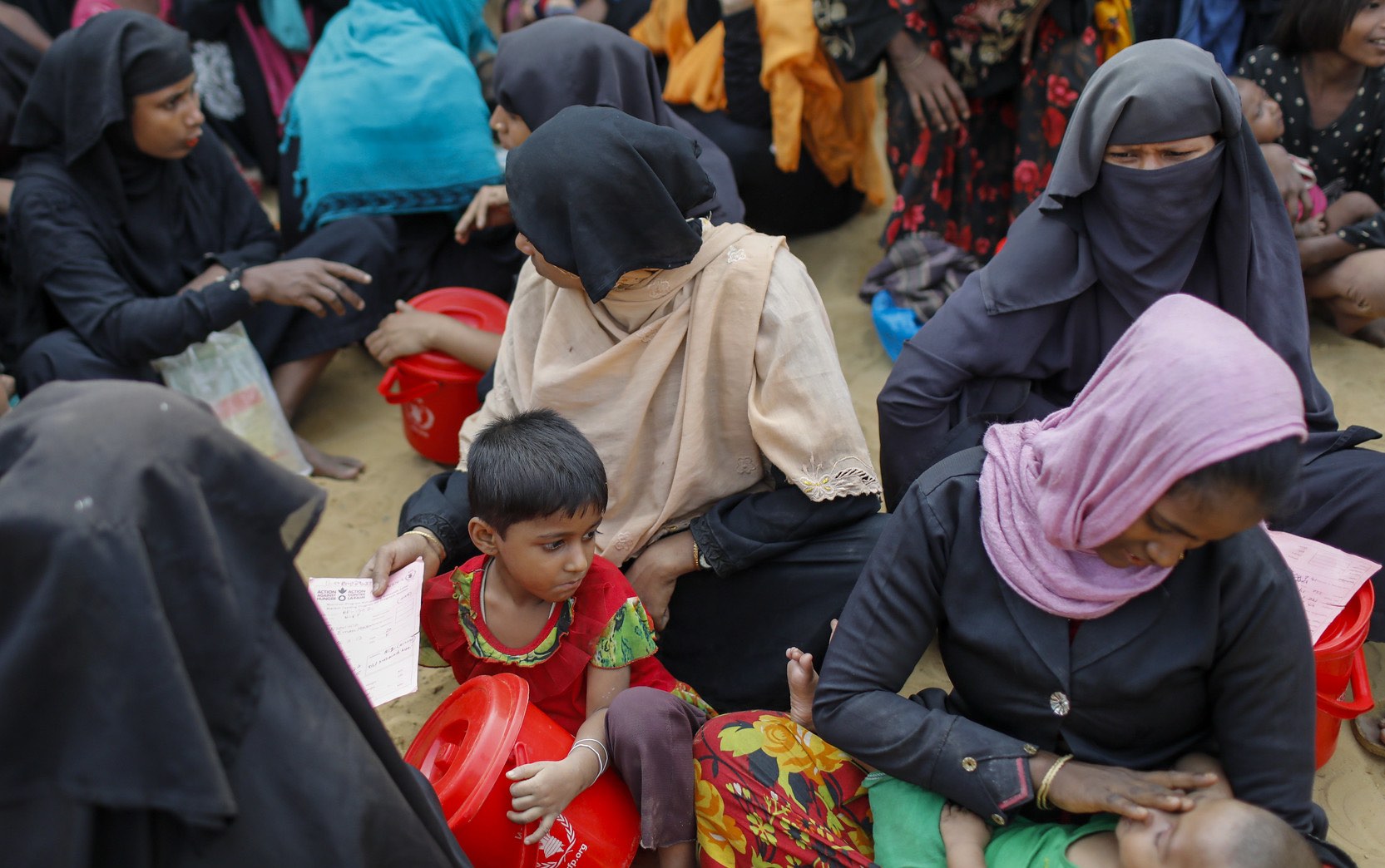Note: Join us July 10 as the authors and other participants discuss their survey of Rohingya refugees in Bangladesh at an IFPRI policy seminar.
It’s been nearly two years since 671,000 Rohingya fled violence and persecution in Myanmar for the safety of Cox’s Bazar, near the southeastern tip of Bangladesh.
Between Aug. and Oct. 2017 they joined more than 200,000 Rohingya displaced over the previous 20 years, with around one million of these displaced people now living in Bangladesh. Only 50,000 have official refugee status; the vast majority live in legal limbo as Forcibly Displaced Myanmar Nationals (FDMNs). Their situation remains tenuous in many ways, presenting serious immediate and long-term challenges for the government of Bangladesh, aid organizations, and the international community. We were among a group of researchers from the Bangladesh Institute of Development Studies (BIDS) and IFPRI, in collaboration with the World Food Programme and Action Against Hunger, who conducted a survey of approximately 2,100 Rohingya FDMN in Oct. 2018. We found that the Rohingya are, at best, surviving, not thriving. Access to food assistance is nearly universal, the data show. At the time of the survey, 62% received a food parcel consisting of rice, lentils and micronutrient-fortified cooking oil; 34% received electronic food vouchers (e-vouchers) that could be redeemed for 19 different food items; and 4% reported receiving both. The good news is that the Rohingya were able to access this assistance easily and there were virtually no reported instances of harassment or payments to persons in position of authority. For those Rohingya arriving after Oct. 2017, these transfers comprise approximately 80% of household income. These aid efforts by the Bangladeshi government, the World Food Programme, and the international community have averted a potential humanitarian disaster. Yet by any measure—income, consumption, assets—the Rohingya are poor. Monthly per capita income for those Rohingya who arrived after August 2017 is $19 and $22 for those who arrived earlier.
By comparison, income levels of Bangladeshi households in the host community are 46% higher ($29). While their calorie intake is above the minimally required level, Rohingya households have monotonous diets and eat little fruit, vegetables, meat, or dairy products. While children’s nutritional status has improved, under-nutrition remains unacceptably high. Among Rohingya children aged six to 59 months who arrived after Aug. 2017, 32% are chronically undernourished and 13% are acutely undernourished. Children in Rohingya households who arrived earlier are not better off: 36% are chronically undernourished and 12% are acutely undernourished. A lack of nutrients during pregnancy, monotonous diets and poor hygiene conditions in the camps are important factors in the continuing poor nutritional status of children. Rohingya families try to supplement the food assistance they receive but because they do not have legal refugee status, those who arrived between Aug. and Oct. 2017 have limited options. Around 10% of their income comes from working inside or outside the camps, with the remainder coming from other sources or running their own businesses. As a result many are forced to buy food on credit or are reliant on other strategies to survive such as skipping meals. Rohingya households that have lived in Bangladesh longer, particularly those with refugee status, have better access to other forms of income. As a result, while 70% of their income comes from food assistance, 19% comes from working inside or outside the camps, and 2% from their own businesses. The Rohingya in Bangladesh face difficult circumstances with few options for viable, productive livelihoods—and their long-term prospects appear grim. While averting a humanitarian disaster is an impressive achievement, the status quo is not sustainable.
International efforts to guarantee the Rohingya safe return to Myanmar have been ineffectual. Continued financing by Bangladesh and the donor community is threatened by competing needs and donor fatigue. Equally important, the FDMN children are not in school and adults have no access to training, further endangering their long-term prospects. In the absence of new initiatives, the Rohingya settlements in Bangladesh may become places of hopelessness, anger or even violence. One way to help the Rohingya would be to relax legal restrictions which prevent them working outside the camps. Research shows that the Rohingya could be absorbed in the local labour force without lowering wage rates as long as there are significant government or NGO payments to the host population along with investments in job creation. This idea faces considerable opposition, however—both among the Cox’s Bazar Bangladeshi community and in Dhaka, capital of Bangladesh. This should come as no surprise—research shows that without investing in the local population, wages of the host community would fall if the Rohingya were allowed to work. The Rohingya also face the problem of displaced people around the world: actual or potential large-scale influxes of migrants are deeply unpopular among many groups in both developed and developing countries, and Bangladesh is no exception. Some opponents of long-term support to those in the camps voice concerns that allowing them to work or have refugee status could discourage Myanmar from providing a safe return, or even lead to additional forced exiles. The international community has some options to encourage greater Rohingya access to employment. Syrian refugees in Jordan, for example, have benefited from World Bank loans and trade concessions (eased access to the European Union market), which have spurred investments in firms that employ both refugees and native Jordanians. Difficult policy choices lie ahead for the people of Bangladesh, their government and to a large extent the Rohingyas themselves. Humanitarian efforts to date have opened a window of opportunity to consider longer term solutions—but that window will not be open forever.
Paul Dorosh is the Director of IFPRI’s Development Strategy and Governance Division; John Hoddinott is a Nonresident Fellow with IFPRI’s Poverty Health and Nutrition Division and H.E. Babcock Professor of Food & Nutrition Economics and Policy at Cornell University. This post first appeared in The Telegraph. Opinions are the authors’.







